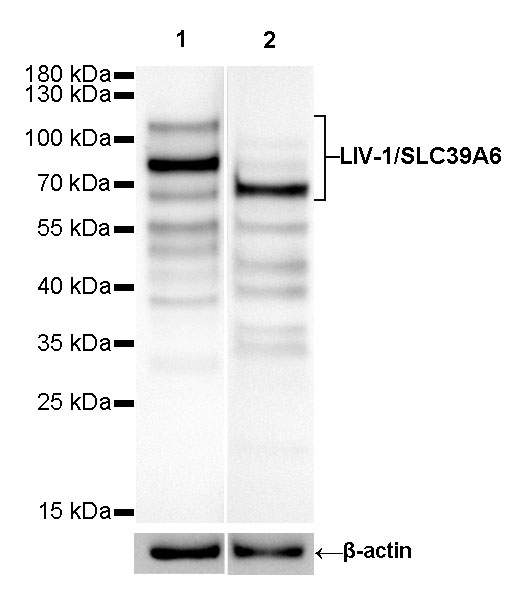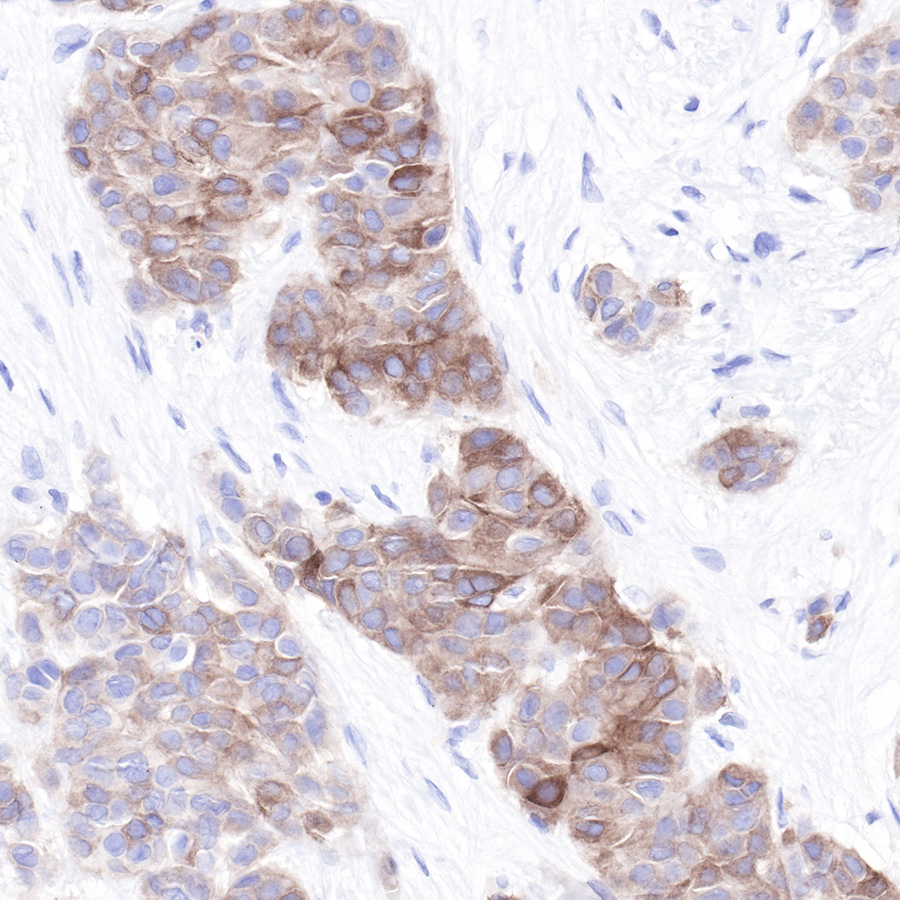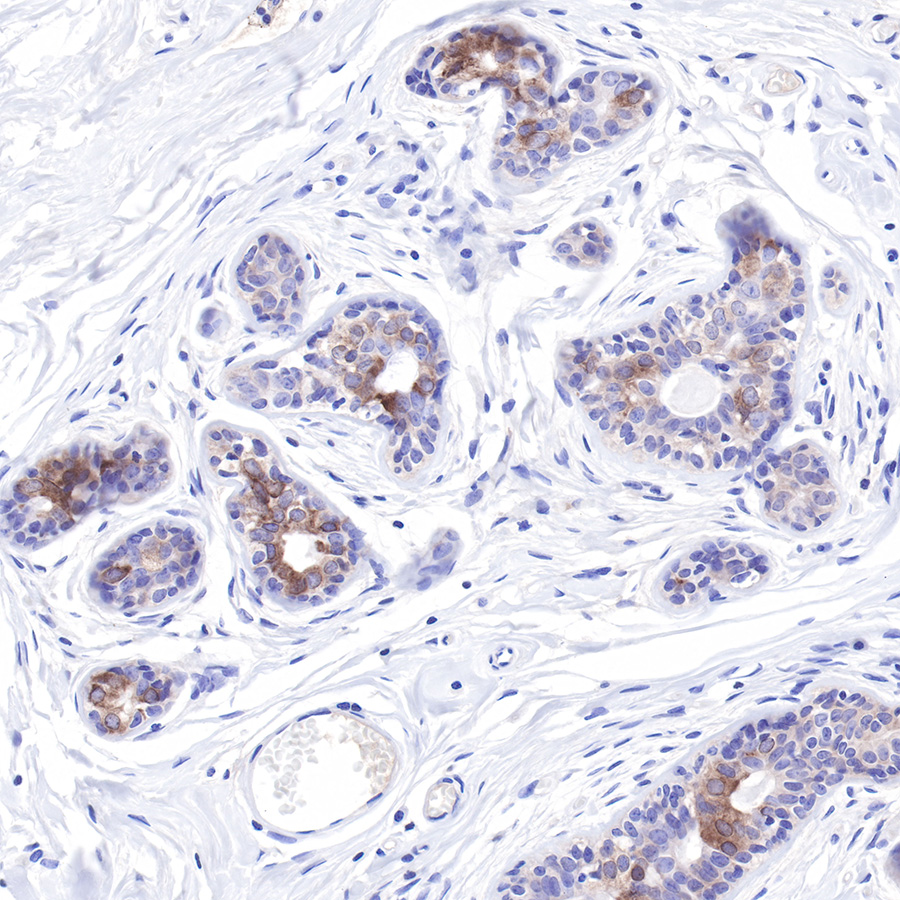Product Specification
| Host |
Rabbit |
| Antigen |
LIV-1 |
| Synonyms |
Zinc transporter ZIP6,
Estrogen-regulated protein LIV-1,
Solute carrier family 39 member 6,
Zrt- and Irt-like protein 6,
ZIP-6 |
| Immunogen |
Synthetic Peptide |
| Location |
Cytoplasm, Membrane |
| Accession |
Q13433 |
| Clone Number |
SDT-206-84 |
| Antibody Type |
Rabbit mAb |
| Application |
WB, IHC-P |
| Reactivity |
Hu |
| Predicted Reactivity |
Or |
| Purification |
Protein A |
| Concentration |
0.5 mg/ml |
| Conjugation |
Unconjugated |
| Physical Appearance |
Liquid |
| Storage Buffer |
PBS, 40% Glycerol, 0.05%BSA, 0.03% Proclin 300 |
| Stability & Storage |
12 months from date of receipt / reconstitution, -20 °C as supplied |
Dilution
| application |
dilution |
species |
| WB |
1:1000 |
|
| IHC-P |
1:200 |
|
Background
Zinc transporter LIV-1 (SLC39A6) is estrogen regulated and present in increased amounts in estrogen receptor-positive breast cancer as well as in tumors that spread to the lymph nodes. The LIV-1 subfamily of ZIP zinc transporters consists of nine human sequences that share considerable homology across transmembrane domains. Many of these sequences have been shown to transport zinc and/or other ions across cell membranes. SLC39A6 is a member of the ZIP family of transporters, which control zinc homeostasis by regulating the influx of zinc from extracellular to intracellular spaces. The zinc transport function of SLC39A6 plays an important role in cellular metabolism. Zinc is required for a variety of cellular processes, including immune activity, protein synthesis, nucleic acid metabolism, cell proliferation, tissue repair and cell division, and low zinc levels can lead to metabolic disorder and inhibit cell growth. Overexpression of SLC39A6 has been related to the progression of several types of cancer, including breast , prostate, pancreatic, cervical and liver cancer, verexpression of SLC39A6 promoted the epithelial-mesenchymal transition (EMT).












